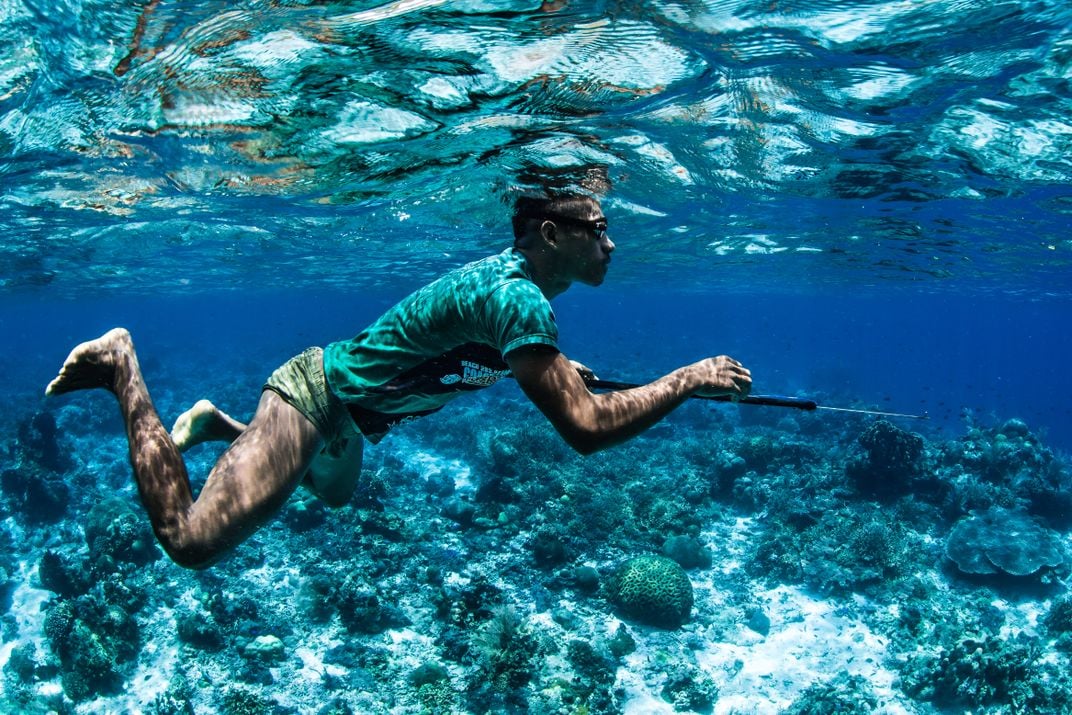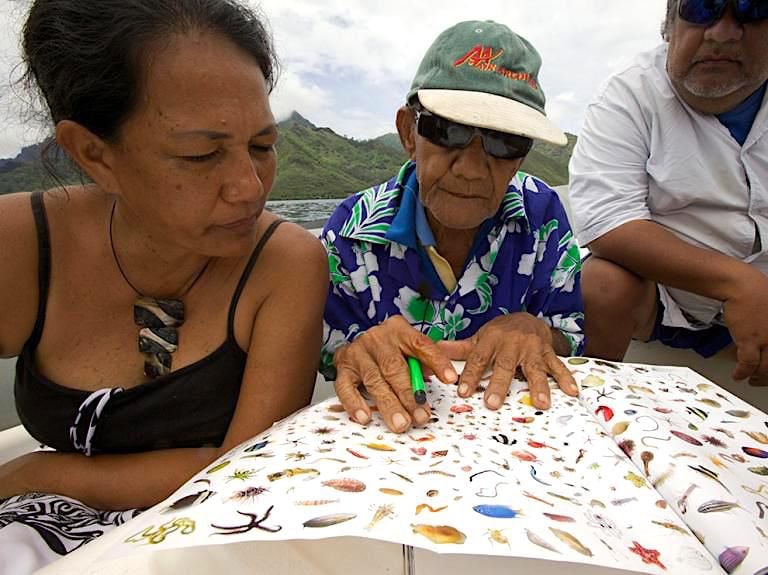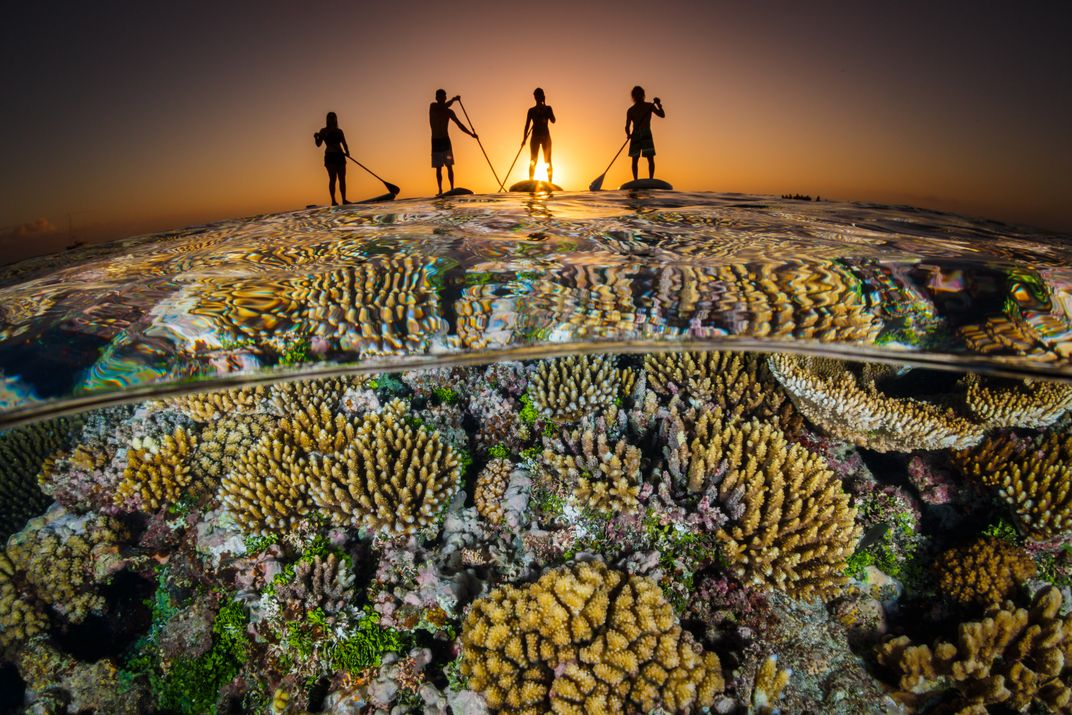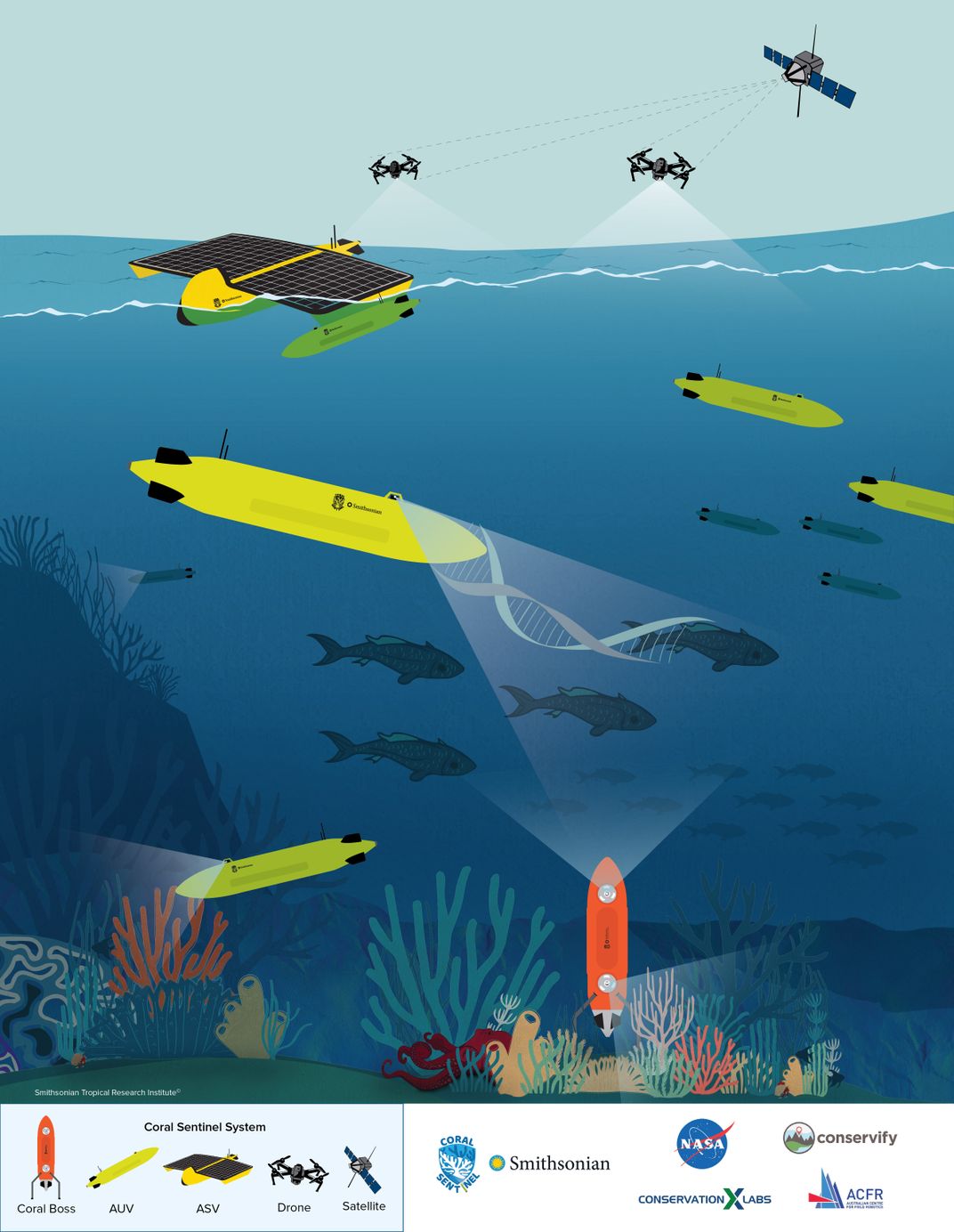SMITHSONIAN ENVIRONMENTAL RESEARCH CENTER
Reef Robots. Predicting Marine Life Like Weather. Meet the Ocean of 2030.
Imagine a world where an indigenous fisher can get forecasts of local marine life from a smart phone, or a team of robots can offer real-time data on coral reef health. That’s the vision of two Smithsonian projects highlighted by the United Nations for its Decade of Ocean Science.
/https://tf-cmsv2-smithsonianmag-media.s3.amazonaws.com/blogging/featured/OceanImageBank_AlexMustard_07.jpg)
Imagine a world where an artisanal fisher in Senegal can swipe her cell phone to check not just the weather, but the forecast for harmful algal blooms in the area. Or an indigenous community in Alaska can upload traditional knowledge of salmon into a global marine knowledgebase for more effective fishery management. Or a conservation activist in Australia can get near real-time data on coral reef health, thanks to autonomous robots.
That’s the vision of Marine Life 2030 and Coral Reef Sentinels, two Smithsonian programs to receive official endorsement from the United Nations on World Oceans Day, June 8.
The United Nations has declared 2021-2030 the Decade of Ocean Science for Sustainable Development. The Ocean Decade aims to advance “the science we need for the ocean we want.” The U.N. called on scientists around the world to submit ideas for Decade Actions—global team efforts that will help create a healthier, more sustainable ocean by 2030. Out of hundreds of proposals, 33 made the cut for initial endorsement in June 2021.
The year 2030 wasn’t an arbitrary choice. That’s the same year the United Nations set for meeting its Sustainable Development Goals, which include ocean conservation as part of a plan to reduce poverty and benefit people everywhere. Saving the ocean and its resources is a tall order. But the international appetite for conservation is on the rise. The Biden Administration’s “30 by 30” goal, to protect 30% of land and ocean territories by 2030, was embraced earlier this month by seven of the world’s largest economies, known as the Group of 7. Roughly 26% of U.S. ocean territories already have some level of protection—though only 6% have full protection.
Marine life knows no national borders. Reaching the goals for a healthy ocean by 2030 will mean reaching beyond national boundaries to create a clearer path to sustainability.

Biodiversity for the People
The ocean contains over 90% of the livable space on Earth. Yet despite decades of undersea exploration, life in the ocean is still a big black box. We know of roughly 200,000 species living beneath the waves. But it’s estimated perhaps 1 million more species may still be out there, awaiting discovery. And for the species that are on our radar, data are often poorly connected and inaccessible to those who need it most—the people who rely on the sea for their food and livelihood.
That’s where Marine Life 2030 comes in.
“The ocean’s diverse life is the heart of ecosystems that provide essential protein, livelihoods, and coastal protection to billions of people worldwide,” said project co-lead Emmett Duffy, director of the Smithsonian’s Tennenbaum Marine Observatory and MarineGEO program, based at the Smithsonian Environmental Research Center (SERC). “Yet biodiversity is the crucial missing piece in existing ocean observing.”
“We’re managing a store without knowing 70% of our inventory,” said Chris Meyer, fellow project co-lead and zoologist with the Smithsonian’s National Museum of Natural History (NMNH).
Marine Life 2030 envisions a world where anyone can tap into information about their local marine fisheries and ecosystems. A world where predicting sea life trends is as simple as pulling up a weather forecast.
“One of the things that we would like to do with Marine Life 2030 is akin to what the weather services of the world did some 50 to 60 years ago—to collect the information that you need to forecast life in the sea and its services to people,” said Frank Muller-Karger of the University of South Florida.

Doing that means developing artificial intelligence and other technologies to create and connect open-access resources. It means assembling a DNA library of the world’s marine species, which the team has christened “Ocean Biocode” as part of the National Museum of Natural History’s Ocean DNA Initiative. Most importantly, it means connecting the myriad databases and networks that already exist, to highlight their work and make their info more accessible. More than 50 partners have already joined forces on Marine Life 2030 to make this vision a reality.
The biggest connections to make—and the ones the Marine Life 2030 team is most focused on right now—are with the public and coastal communities themselves. This includes reaching out to indigenous and local leaders around the world who often know local marine life best. Marine Life 2030 is working to incorporate traditional knowledge into its ocean monitoring and planning activities.
“We will be most effective if we engage with local communities that depend on marine life for their well-being, and incorporate traditional knowledge into our planning and tools,” said Gabrielle Canonico of the U.S. Integrated Ocean Observing System Program housed at NOAA.
Public and private sector leaders face especially high pressure to make informed choices about issues like offshore energy, marine sanctuaries and fishing quotas—choices that often have lasting impacts, pointed out Lauren Weatherdon, a project partner with the U.N. Environment Programme World Conservation Monitoring Centre.
“There is an urgency for them to make quick decisions, often with limited data,” Weatherdon said. “In the marine environment in particular, it is extraordinarily difficult to have that clear snapshot of what we should care about. I think this is the opportunity to really help them access this knowledge, because they're calling for it.”

Reef Robots for Coral Telemedicine
Knowledge of marine life is especially urgent for coral reefs, which are threatened worldwide. Coral Reef Sentinels, the second Smithsonian project to earn a Decade Action endorsement, will deploy autonomous robots in coral reefs around the world to create an early warning system called “Global Coral Watch” for coastal communities, conservationists and decision makers.
From 3D reef imaging to DNA detection and drone and satellite mapping, the project will customize and test an automated reef monitoring system at many different scales to track environmental conditions and marine life—in essence, do "telemedicine for reefs.” Swarms of low-cost automated underwater vehicles will reach remote areas and can take measurements from wave tops to 200 meters (over 650 feet) below the surface. Like Marine Life 2030, the project will foster new forms of community involvement, with an emphasis on diversity, inclusion, and co-design. This is crucial to translating data into conservation interventions to reverse the decline of coral reefs globally.

Coral biologist David Kline of the Smithsonian Tropical Research Institute (STRI) leads the project, with researchers from Conservify, Conservation X, NASA Ames, Oregon State University, and the University of Sydney. They will work with a research team from 10 partner institutions, including STRI, MarineGEO, SERC, NMNH, the California Academy of Sciences, the Scripps Institute of Oceanography, the University of Haifa, Technion, and Bar-Ilan University. The Coral Sentinel project illustrates the type of cutting-edge technological and collaborative approach to marine biodiversity conservation that Marine Life 2030 aims to connect and spread globally.
“The endorsement by the U.N. Ocean Decade raises the profile and visibility of our Coral Sentinels Project, and will be critical for making this a sustainable program that can continue to become truly global,” Kline said.
The Coral Reef Sentinels project dovetails with another project launched in 2020, which Kline co-leads with Sean Connolly, Matt Leray and Mark Torchin of STRI: the Rohr Reef Resilience Project. That project seeks to understand why some “super corals” in the Tropical Eastern Pacific are more resistant to the ravages of climate change. Mark Rohr, an ocean enthusiast and Fortune 500 entrepreneur, donated his super-yacht Acadia and four years of funding to kick start this project.
Both Marine Life 2030 and Coral Reef Sentinels set ambitiously high bars. To hit their marks, they’ll need global cooperation not just from scientists, but from local leaders in politics, business, and communities around the world. But their success will mean the ocean of 2030 will be a clearer, more connected realm—where everyone who has a stake in the ocean has a voice.
